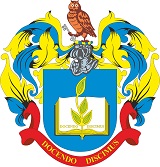Please use this identifier to cite or link to this item:
http://46.63.9.20:88/jspui/handle/123456789/548| Title: | Creativity Formation in the Context of Social and Psychological Adaptation of Preschoolers Aged 5-6 Years. |
| Authors: | Zdanevych, L.V. Buchkivska, G.V. Greskova, V.V. Аndriievskyi, B.M. Perminova, L.A. |
| Keywords: | creative potential intelligence creativity diagnostics productivity originality readiness social competences temperamen anxiety |
| Issue Date: | 2020 |
| Publisher: | International Journal of Cognitive Research in Science. Web of Science, Scopus |
| Citation: | Zdanevych, L.V., Buchkivska, G.V., Greskova, V.V., Аndriievskyi B.M., & Perminova, L.A. (2020). Creativity Formation in the Context of Social and Psychological Adaptation of Preschoolers Aged 5-6 Years. International Journal of Cognitive Research in Science, Engineering and Education, 8 (Special issue), 79–91. https://doi.org/10.23947/2334-8496-2020-8-SI-79-91 (Роль креативності в розвитку адаптаційного потенціалу дитини дошкільного віку) Web of Science, Scopus |
| Abstract: | The aim of the research is to analyze the creativity manifestation in the early stages of ontogenesis; to verify the relationship between creative abilities and social adaptation of preschoolers. The importance of the topic under consideration is determined by the fact that preschoolers’ childhood is the main sensitive period for the formation of creativity as the person’s adaptive re-source. The deficiency of development during this period cannot be compensated later. The examination of the creative abilities of 115 children aged 5-6 years has been conducted. Based on the total result of seven subtests Torrance Tests of Creative Thinking, three groups of children have been distinguished. They include children with high (N=20), medium (N=79), and low (N=16) creative potential. Data on behavior have been collected from 142 parents and 24 teachers who supervised children during communication situations. The adaptation of preschoolers have been analyzed on three sides: as a set of individual be-havioral reactions conditioning cooperation with the environment (A questionnaire of children’s temperament Thomas and Chess); as a social competency – skills in communication with children and adults (expert assessments of teachers based on the open structured supervision), and as an emotional adaptation to life situations (the projective technique of anxiety diagnostics “Choose a face”). In all cases, children with high creative potential demonstrated particular differences. The positive reaction of “approaching” in response to new stimuli, a low sensory threshold, and high speed of adaptation to the change of external terms are a typological profile of a “creative” temperament. Related problems of emotional reaction and the increased anxiety of preschoolers have been detected. The development of skills for social competence lags significantly in the group with a low level of creativity. The factorial structure of creative abilities, which presents three types of creativity (subject, verbal, and figurative), and three leading abilities (productivity, originality, and fluency) have been suggested. The particular parameters of creativity corre-late in different ways with the adaptability of preschoolers: the readiness is more successful, and originality is associated with disturbances of emotional regulation. In conclusion, creativity is presented as a natural condition for a child’s adaptation. |
| URI: | http://46.63.9.20:88/jspui/handle/123456789/548 |
| Appears in Collections: | Кафедра дошкільної педагогики, психології та фахових методик |
Files in This Item:
| File | Description | Size | Format | |
|---|---|---|---|---|
| lstosic-creativity-formation-in-the-context-of-social-and-psychological.pdf | стаття | 1,23 MB | Adobe PDF |  View/Open |
Items in DSpace are protected by copyright, with all rights reserved, unless otherwise indicated.
